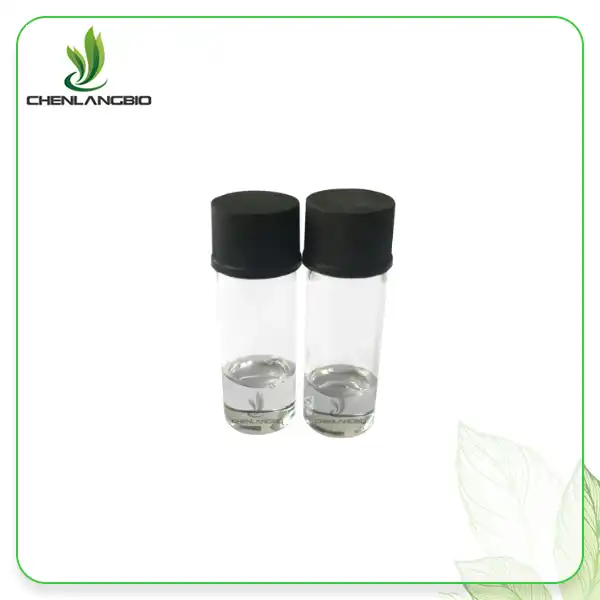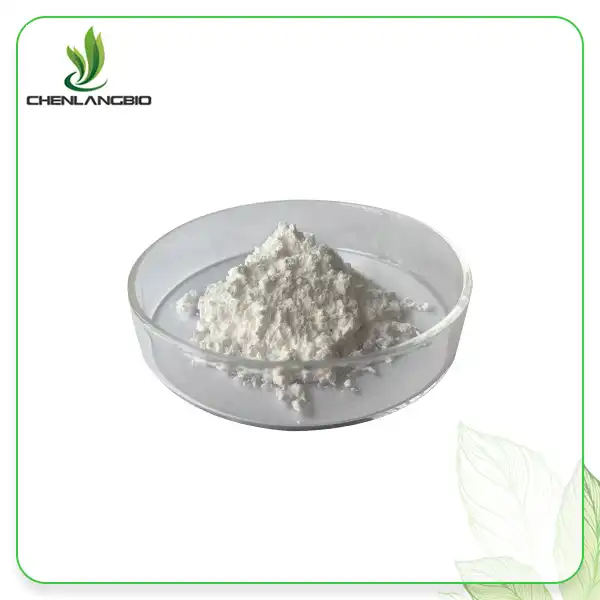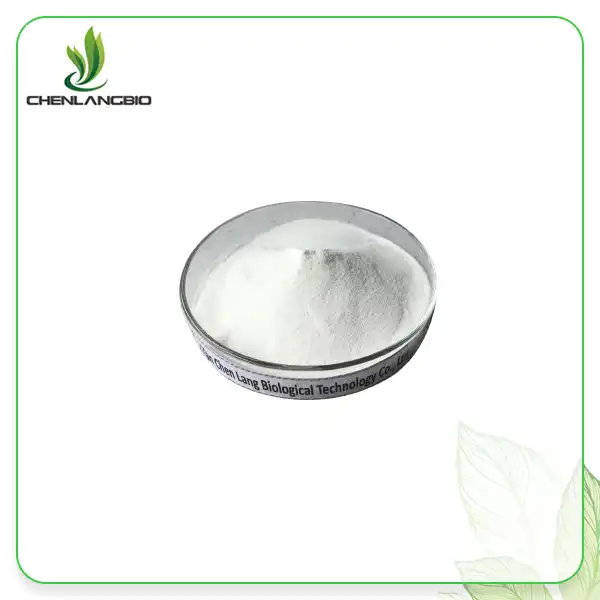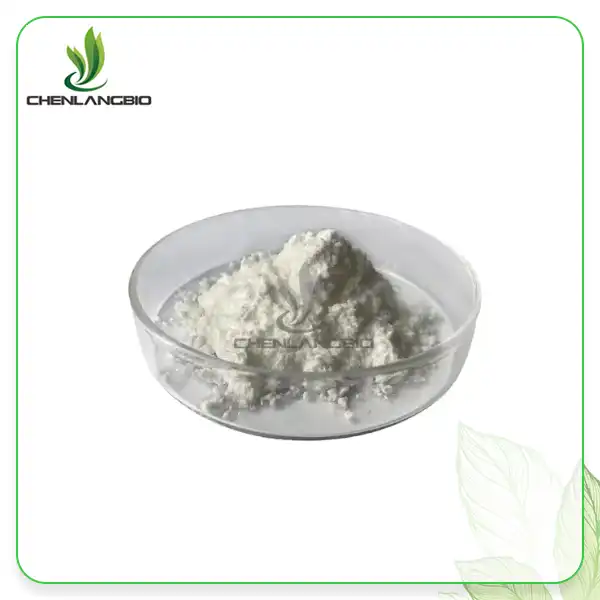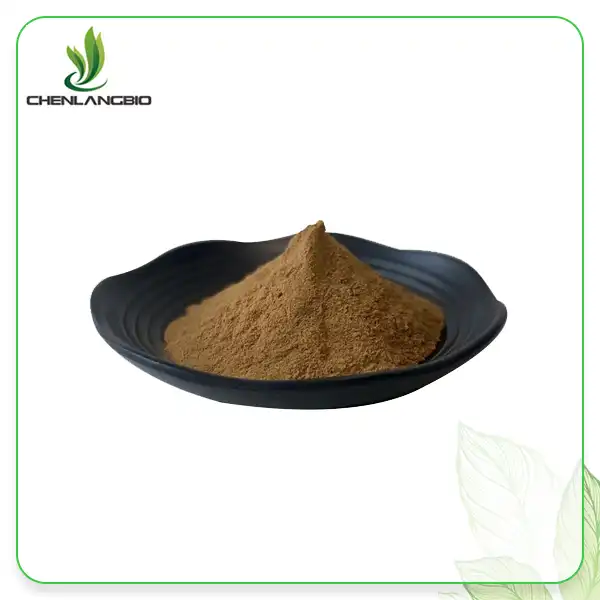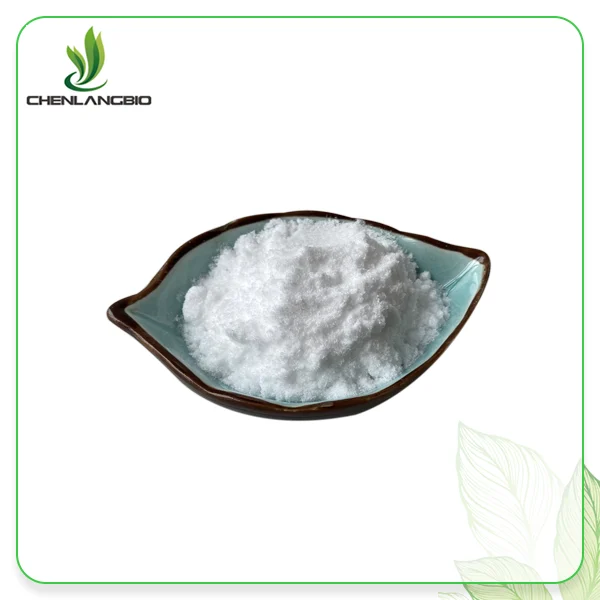Why May Ectoin be the New Niacinamide
2024-09-30 10:04:43
One such contender is ectoine, a natural compound that's been gaining traction in the beauty industry. As skincare enthusiasts and professionals alike search for the next big thing, many are wondering if Ectoin could potentially dethrone niacinamide, a long-standing favorite in skincare formulations. This blog post delves into the properties and benefits of Ectoin, comparing it to niacinamide, and exploring why it might just become the new go-to ingredient for achieving healthy, radiant skin.We'll look at the science behind Ectoin, its possible benefits, and how it piles facing the time tested niacinamide.
Understanding Ectoine: Nature's Stress Shield
Ectoine, a naturally occurring molecule, has garnered attention for its remarkable ability to protect cells from environmental stressors.Discovered in extremophiles—organisms that thrive in extreme conditions such as high salinity, temperature, or radiation—ectoin plays a critical role in their survival by stabilizing cellular structures and preventing damage. This protective function is attributed to ectoin’s unique molecular structure, which allows it to form a protective shell around the cells and their components. This shell shields the cells from harsh conditions like oxidative stress, UV radiation, and high temperatures, demonstrating ectoin’s potential as a powerful ingredient in skincare and other therapeutic applications.
In the realm of skincare, ectoin’s benefits extend beyond mere cellular protection. Its ability to maintain cellular integrity makes it an effective agent in combating the signs of aging and environmental damage.Furthermore, ectoin’s role as a stabilizer extends to its interaction with other ingredients in skincare formulations. It can enhance the stability and efficacy of other active ingredients by protecting them from degradation.The inclusion of ectoin in skincare products thus represents a strategic approach to maximizing the effectiveness of formulations and addressing a range of skin concerns more comprehensively.
Research into ectoin also reveals its potential therapeutic applications beyond skincare. Its cellular protective properties make it a candidate for treating various conditions where cellular stress is a factor, such as inflammatory diseases and allergies. For instance, ectoin has been studied for its potential to alleviate symptoms of allergic rhinitis by stabilizing cell membranes and reducing inflammation. This broader therapeutic potential underscores ectoin's versatility and its capacity to offer benefits in diverse medical and cosmetic fields.
Overall, ectoine exemplifies nature's ingenuity in creating molecules that serve as natural stress shields for cells. Its protective, stabilizing, and hydrating properties highlight its significant role in both skincare and potential therapeutic applications. As research continues to uncover new benefits and uses for ectoin, it is poised to become a valuable ingredient in efforts to enhance skin health and address various health conditions linked to cellular stress and damage.
Niacinamide: The Current Skincare Superstar
Niacinamide, otherwise called vitamin B3, has acquired boundless approval in the skincare business because of its flexibility and viability. Its popularity stems from its wide array of benefits, which address numerous skin concerns.
One of niacinamide's most critical qualities is its capacity to further develop the skin's hindrance capability. By boosting ceramide production, niacinamide helps strengthen the skin’s natural barrier, enhancing its ability to retain moisture and protect itself from environmental aggressors. This improvement in hindrance capability forestalls dampness misfortune as well as diminishes dryness and awareness, pursuing niacinamide a magnificent decision for those with delicate or compromised skin.
As well as bracing the skin hindrance, niacinamide is prestigious for its capacity to address hyperpigmentation. It helps diminish the appearance of age spots, sun spots, and post-inflammatory hyperpigmentation, leading to a more even complexion over time. This makes niacinamide a popular ingredient in products designed to even out skin tone and reduce discoloration.
Niacinamide also plays a role in calming irritated skin and preventing acne. Its calming properties assist with mitigating redness and awareness, which can be especially useful for people with conditions like rosacea. By regulating sebum production, niacinamide can also reduce the formation of acne lesions.
Furthermore, niacinamide offers impressive anti-aging benefits. It animates the creation of collagen and elastin, proteins fundamental for keeping up with skin flexibility and solidness.This leads to a reduction in the appearance of fine lines and wrinkles, contributing to a more youthful and resilient complexion. Moreover, niacinamide further develops skin surface and perfection, upgrading its allure as an enemy of maturing fixing.
Ectoine vs. Niacinamide: A Comparative Analysis
Ectoin and niacinamide are two conspicuous skincare fixings, each commended for their interesting advantages and properties.Ectoin, a naturally occurring molecule found in extremophiles, is known for its protective qualities.It goes about as a cell stabilizer by framing a defensive shell around cells, safeguarding them from oxidative pressure, UV radiation, and outrageous temperatures.This barrier helps preserve cellular integrity and maintain skin hydration by preventing moisture loss. Additionally, ectoin enhances the stability of other active ingredients in skincare formulations, optimizing their efficacy and offering comprehensive skin protection.
Then again, niacinamide is esteemed for its capacity to further develop skin hindrance capability, even out complexion, and lessen irritation.It works by boosting ceramide production to strengthen the skin’s barrier, diminishing the appearance of dark spots, and addressing issues like redness and sensitivity.Comparing the two, ectoine excels in protecting the skin from environmental damage and maintaining hydration, making it ideal for those exposed to harsh conditions. Niacinamide, meanwhile, is effective in improving skin texture, tone, and addressing inflammation.
For tailored skincare, choosing between ectoin and niacinamide depends on your specific needs. Many advanced formulations combine both ingredients to harness their complementary effects, optimizing both protection and repair for enhanced skin health.
Conclusion
While niacinamide remains a powerful and versatile skincare ingredient, ectoine presents a compelling case as a potential new frontrunner in the skincare world. Its unique protective properties, coupled with its hydrating and anti-aging benefits, position Ectoin as a formidable contender to niacinamide's throne. As more research emerges and skincare formulations incorporate Ectoin, we may indeed see it become the new go-to ingredient for those seeking comprehensive skin health and protection. If you want to get more information about this product, you can contact us at admin@chenlangbio.com.
References
1. Krutmann, J., et al. (2020). "The skin aging exposome." Journal of Dermatological Science, 96(3), 152-161.
2. Graf, R., et al. (2008). "Ectoin: A natural cell protectant for skin care." SÖFW Journal, 134(7), 32-38.
3. Wohlrab, J., et al. (2019). "Efficacy and tolerability of a cosmetic skin care product with 10% glycoin and 1% ectoin for mitigating epidermal aging." Journal of Cosmetic Dermatology, 18(1), 346-354.
4. Levin, J., & Momin, S. B. (2010). "How much do we really know about our favorite cosmeceutical ingredients?" Journal of Clinical and Aesthetic Dermatology, 3(2), 22-41.
5. Heinrich, U., et al. (2007). "Multicentre comparison of skin hydration in terms of physical-, physiological- and product-dependent parameters by the capacitive method (Corneometer CM 825)." International Journal of Cosmetic Science, 29(1), 45-51.
6. Bilstein, A., et al. (2015). "Ectoin in skin care: An effective natural moisturizer." Cosmetic & Toiletries Magazine, 130(7), 34-40.
Send Inquiry
Related Industry Knowledge
- Podophyllin Powder in Dermatology Treatments
- Can Kopexil be Used in Combination with Other Hair Loss Treatments?
- Top Water Soluble Coenzyme Q10 Products in 2024
- Instant Kava Powder vs.Traditional Kava: Key Differences
- Unlocking the Skin Benefits of Paeoniflorin 80%
- How Strong is Ascorbyl Glucoside? Benefits and Uses
- What Foods Contain Mangiferin
- What Are Avenanthramides Used For
- Unlock the Power of Astaxanthin: The Ultimate Antioxidant from Haematococcus Pluvialis Extract
- Where to Buy Amygdalin Vitamin b17




